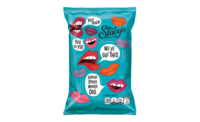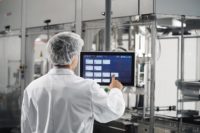By Bjorn Thumas
Food contamination by aflatoxins, which can cause cancer, is worrying scientists and regulators. New concerns about these naturally occurring poisons, voiced earlier this year by scientific advisors, have provided a stark reminder of the health risk to consumers and the commercial risk to food businesses.
Aflatoxins are a problem most commonly encountered with plants grown or foods stored in parts of Asia, Africa and the U.S. This is because the toxins originate in two species of fungus which favor hot and humid climates. In February 2018, however, the European Food Safety Authority (EFSA) reported that there are also concerns about “the elevated aflatoxin levels observed by some food commodities originating from European countries.” Now there are calls for EFSA to make its first full risk assessment of aflatoxins in more than a decade.
These concerns are not surprising: Aflatoxins are 68 times more lethal than arsenic and capable of seriously damaging human and animal livers. Aflatoxins can cause fever, malaise and anorexia, followed by abdominal pain, vomiting and hepatitis. Worse still, chronic toxicity from aflatoxins can reduce immune efficiency and trigger cancer, which is why they are classified by the World Health Organization as a Group 1 carcinogen. Exposure to aflatoxin-contaminated food is known to have caused hundreds of deaths in India and Kenya, and many more fatalities have probably gone unreported. Even in Europe, where there are strict rules about food safety, in 2013 several nations reported widespread aflatoxin-contamination of milk.
The most-poisonous type of aflatoxin, B1, occurs naturally in a wide range of foods. This fungus infects cereal crops including wheat, plus walnut, corn, cotton, peanuts and tree nuts. Aflatoxin B1 also infects spices, crude vegetable oils, figs other dried fruits, cocoa beans, and rice. Another type of aflatoxin, M1, can be present in milk taken from animals which have eaten feed contaminated by aflatoxin B1. Pasteurization of the milk does not protect against aflatoxin infection.
Aflatoxins are not harmful to humans or animals if consumed in small doses, but aflatoxin intake must be kept low. This is why, in many parts of the world, maximum permissible levels of aflatoxins in food are defined by law. If regulators find these levels exceeded, the business responsible pays a heavy price. In addition to the expensive disruption of a product recall, there is the likelihood of costly and possibly fatal brand damage.
All of these dangers are made worse by the fact that aflatoxins are invisible to the naked eye.
Why good samples can lead to bad news
Some food businesses check for aflatoxins by testing samples of their products. This might seem like a responsible precaution, but unfortunately it is not dependable. Taking samples does not provide statistically adequate proof that the product is wholly safe. To visualize why, imagine peanuts filling a huge silo. That’s a lot of peanuts. The problem is that dangerously high levels of aflatoxins can be present in the silo but only in small clusters of nuts. This means there is a correspondingly small chance of those contaminated nuts being picked for a test sample—and a very high chance they will reach a customer and would fail a regulator’s test.
One alternative to taking samples is to blanch the peanuts, passing them through a low-temperature heat treatment to loosen and then remove the seed coat. But this process is unpopular with food producers because it can shorten the product’s shelf life and adds cost. Another solution is to rely on detection by sorting machines.
Sorting machines recognize and dispose of aflatoxins
A top method for aflatoxin detection is to employ sensor-based sorting machines. These machines employ near infra-red (NIR) spectroscopy, fluorescent lighting, and state-of-the-art lasers to analyze the surface structure and elemental composition of objects passing along a food production line. Lasers can identify the extremely low intensity of light reflected by aflatoxin mold and fungus in a variety of food types, enabling the detection of aflatoxin contamination.
Sorting machines can also employ unique biometric signature identification (BSI) technology. BSI works by detecting the biometric characteristics of the food items it scans—for example, nuts and raisins—and compares these to features stored in the machine’s database to determine whether the items should be accepted or rejected. This detects and removes smaller defects than is possible with conventional spectral technology. Detection accuracy is so good that false-rejection rates are exceptionally low and yields exceptionally high.
Systems can also simultaneously perform other important sorting functions, such as taking out foreign material and removing allergens from the line. And when handling corn, the laser can also differentiate between GMO- and non-GMO seeds.
Bjorn Thumas is director, business development, food at TOMRA Sorting Solutions.









